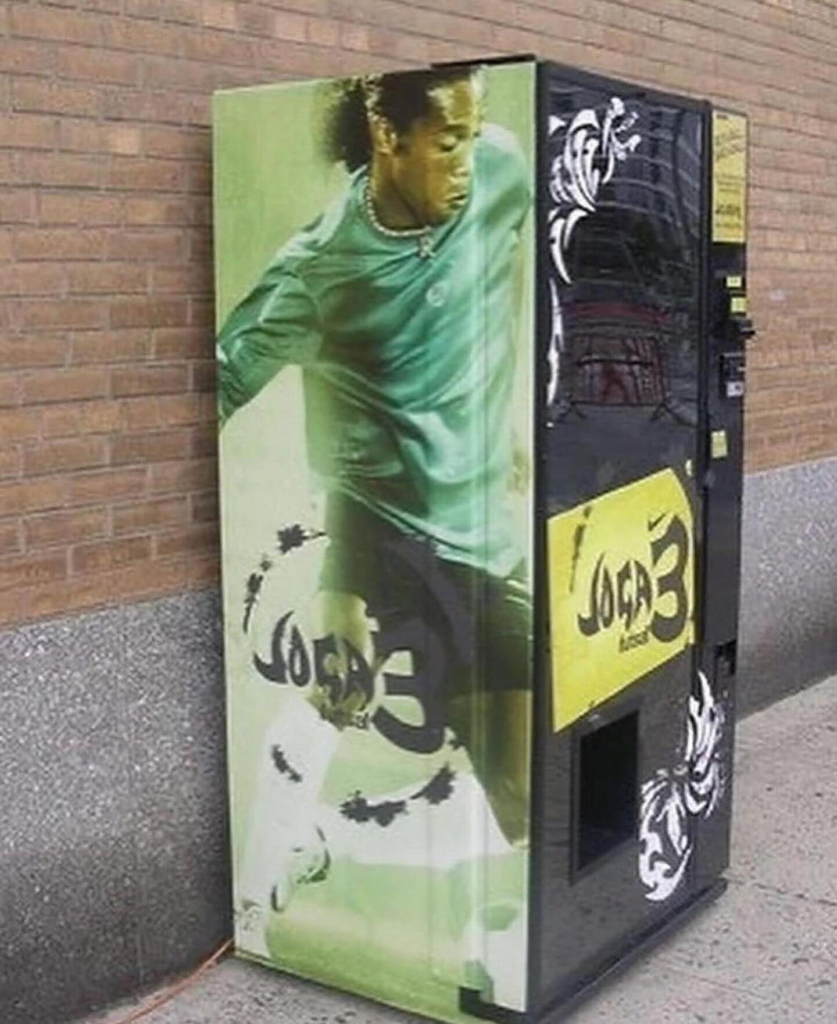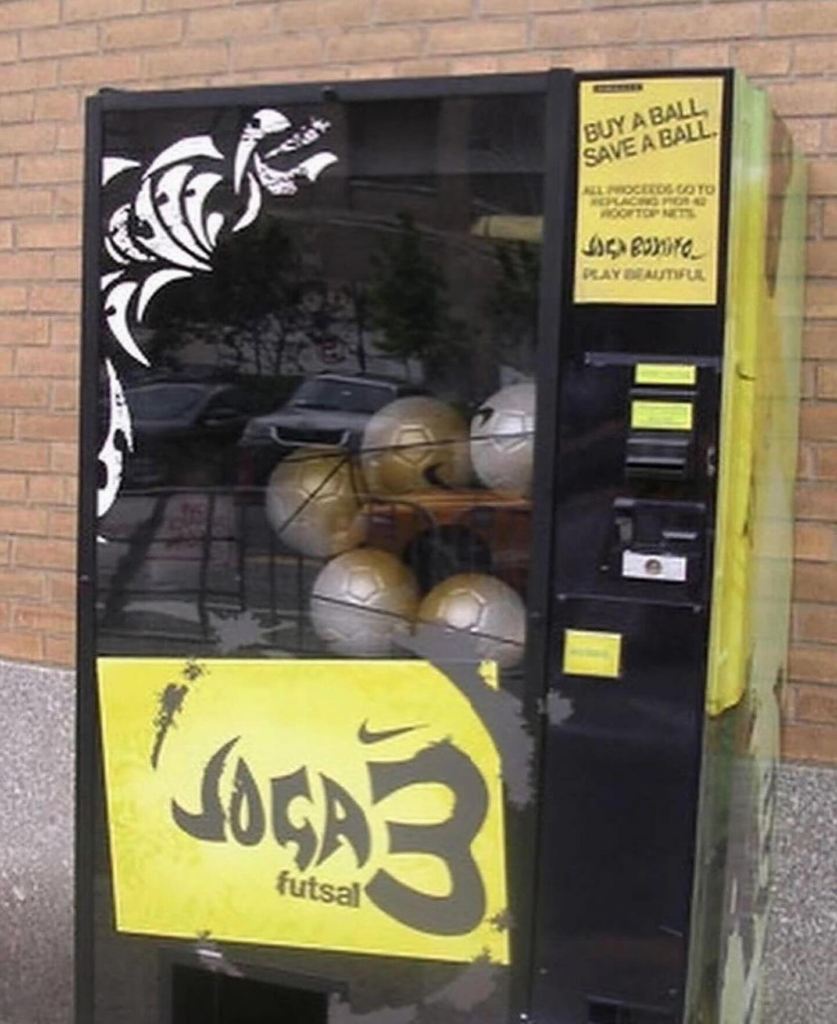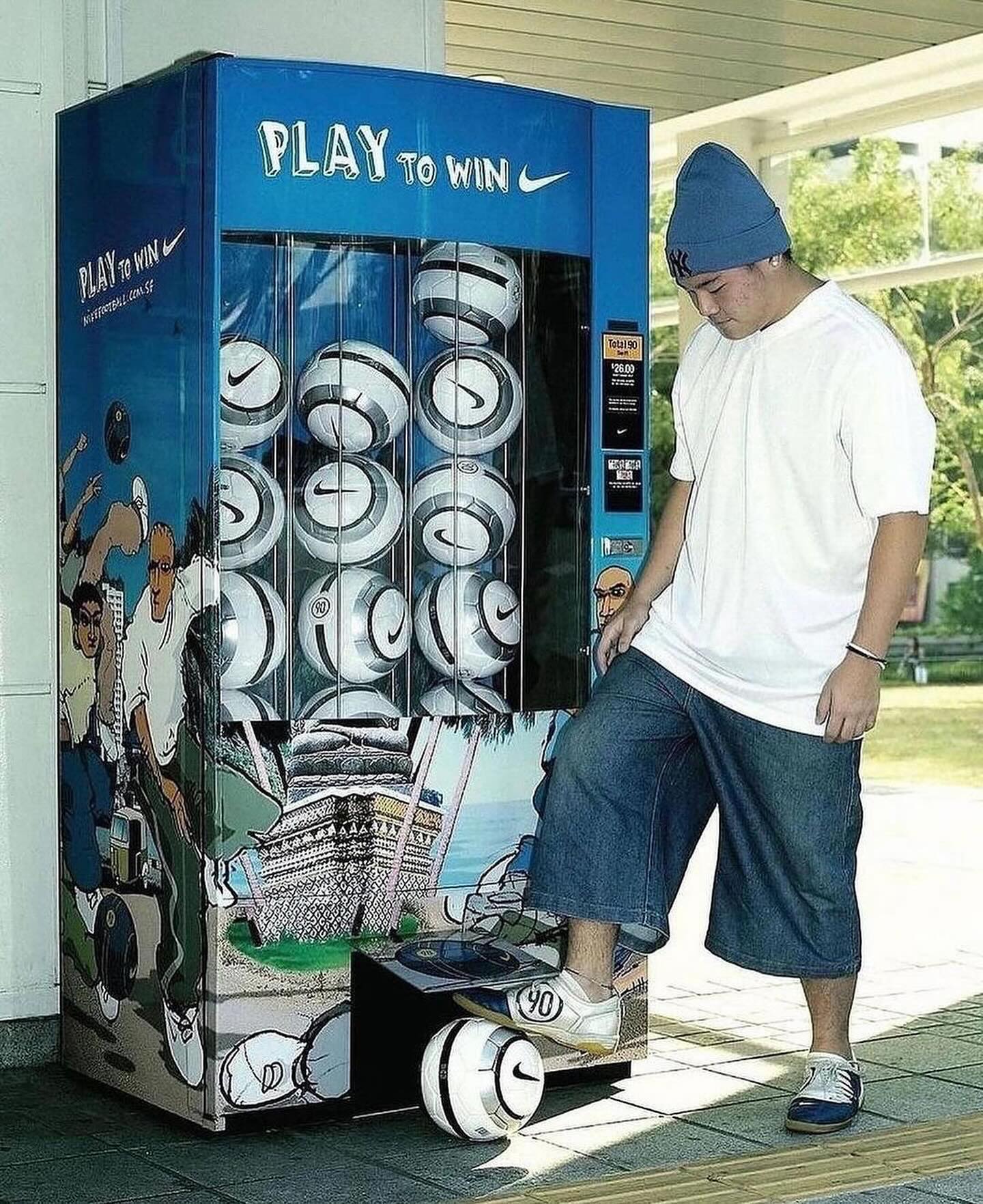Nike was ahead of the curve back in 2004. They set up these iconic Nike vending machines in major cities across the globe. It wasn’t just any vending machine. Oh no, this was a marketing move that shouted “football can be played anywhere, anytime.” All you had to do was have a ball and a pair of boots. These machines were a nod to the accessibility of the sport, and they were as cool as you could get back then.
The vending machines dispensed Nike Total 90 Swift soccer balls, the same ones featured in the Nike TV commercials. They weren’t just selling products; they were selling the idea that you could take the game to the streets, whether you’re in a park, an alley, or the middle of the city. The price? RM 45—just enough for anyone to get their hands on a quality ball.

This wasn’t just an ordinary product promotion; it was a campaign designed to speak to the core of what football represents. Freedom. Expression. And, of course, winning.
Nike continued this theme with their famous “Play to Win” commercials, which featured 2006 World Cup stars like Wayne Rooney, Thierry Henry, and Ronaldinho . They depicted a survival-style street soccer game, where the world’s best players were taking on urban challenges in non-traditional, makeshift environments. The idea? You didn’t need a stadium to play like a champion.
The visuals were just as impactful. Nike’s print ads featured kids playing football wherever they could—whether it was in the market, at home, or on the streets. The powerful tagline “Play to Win” urged everyone to push themselves, no matter where they were or who they were playing with. And even though it wasn’t a massive televised event, Nike made the campaign feel like everyone could be a part of something bigger.
Looking back now, you realize how ahead of its time this campaign was. Nike was tapping into something bigger than just selling a product. They were creating a connection with their audience. Whether it was a Nike T-shirt with the “Play to Win” slogan, or a vending machine on a random corner in a city, Nike was everywhere—and so was football.

It’s hard to imagine this kind of marketing being as effective today, especially with the rise of digital campaigns. But there’s something special about real-world, interactive marketing—something that Nike seemed to capture perfectly in 2004. It’s moments like this that make you feel a part of the brand, like you’re living the message, not just receiving it. That’s what builds loyalty.
Nike didn’t just sell football. They sold a lifestyle, a culture, and a sense of belonging. They made you feel like you could be part of something bigger. And with that, they created a campaign that would stay in people’s minds for years to come.
Final Thoughts
Nike’s “Play to Win” campaign didn’t just sell products. It changed the way people looked at the game. It reminded us that football is about more than just a game—it’s about passion, connection, and the belief that anything is possible with the right mindset. Today, it’s hard to find campaigns that feel this personal and genuine. Maybe that’s because back then, Nike was for the people—and they sure knew how to make us feel like we were part of their story.





